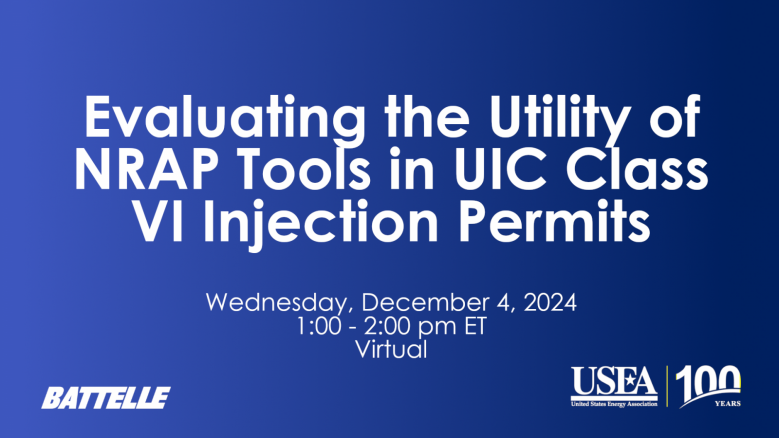
Evaluating the Utility of NRAP Tools in UIC Class VI Injection Permits
The United States Department of Energy – National Energy Technology Laboratory (DOE-NETL) has been developing the National Risk Assessment Partnership (NRAP) to evaluate several aspects of carbon capture storage (CCS). The existing NRAP tools satisfy four key areas of CCS projects: (1) risk-based areas of review (AoRs), (2) induced seismicity probability and impacts, (3) monitoring approaches, and (4) risk of leakage from existing wellbores. The NRAP tools were not developed to satisfy the requirements of the U.S. Environmental Protection Agency (EPA) Underground Injection Control (UIC) Class VI program or the state equivalent in states with Class VI primacy. However, analyses available in the NRAP tools may be useful in developing these permit applications. With this in mind, USEA commissioned Battelle to conduct a study to evaluate the utility of certain NRAP tools in UIC Class VI injection permits.
The current collection of tools is focused on wellbore leakage, state of stress and induced seismicity, and improving monitoring approaches. Throughout this process, improvements to NRAP tools have been made as the program continues to refine the tools. Publicly sponsored commercial-scale projects have helped to demonstrate the tools in several relevant reservoirs. The five NRAP tools currently supported include the NRAP-Open-IAM, ORION, SOSAT (v2), DREAM (v3), and Passive Seismic Monitoring Tool (PSMT). The NRAP-Open-IAM was developed to address leakage risk by determining the effectiveness of containment and potential risk-based leakage from a storage reservoir; (2) SOSAT was developed due to geomechanical risks by “quantify[ing] uncertainties in the original stress state”; (3) ORION was developed to address site-specific induced seismicity risk; (4) DREAM was developed to help operators in the design of monitoring programs; and (5) PSMT was developed to help operators design microseismic monitoring approaches.
The tools have been developed and demonstrated through both conceptual and developing storage projects, and there has been no systematic review of the studies showing the utility of the NRAP tools to satisfy permitting requirements at carbon storage sites. This study seeks to provide an overview of the NRAP tools and their applicability to contribute to the development of U.S. EPA UIC Class VI permit applications for carbon storage projects. The NRAP program was started to provide tools and methods to ”develop computational tools and workflows to quantitatively assess risks and potential liabilities associated with geologic carbon storage and address critical stakeholder questions in support of commercial CCs deployment. While these tools were not explicitly built to address the various requirements of the U.S. EPA UIC Class VI well permits, they provide information and analysis that might be useful in a Class VI application and their equivalents in states with Class VI primacy. Because the current research is applying these tools to a problem that, while related, they were not originally intended to answer, this study should not be considered an evaluation of how the tools perform for their stated purpose. Rather, the study is intended to identify where the tools can be used in Class VI applications and evaluate relevant work demonstrating application of the tools to reservoirs, similar to target reservoirs some of the current Class VI applications.
Learn more from Battelle's Jared Hawkins in a discussion on this most recent report released by USEA and Battelle from Wednesday, December 4 at 1:00 pm via Zoom.
Resources cited:
https://edx.netl.doe.gov/sites/nrap/nrap-approach/
To learn more, you can reach out to: NRAP@netl.doe.gov
To view the full report, see here.

